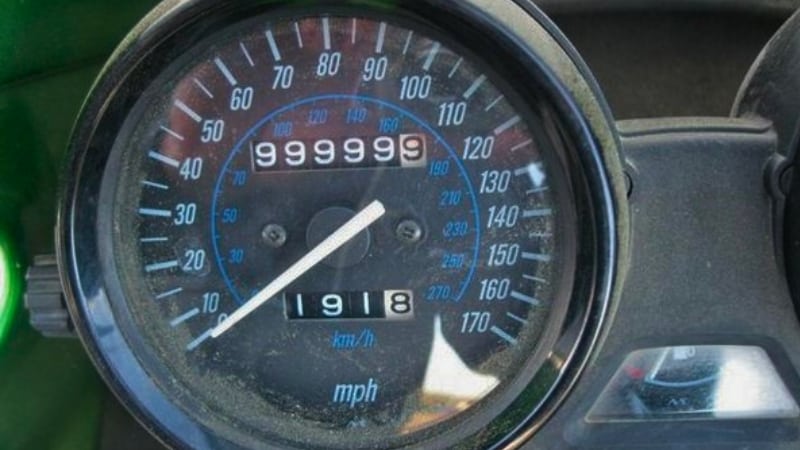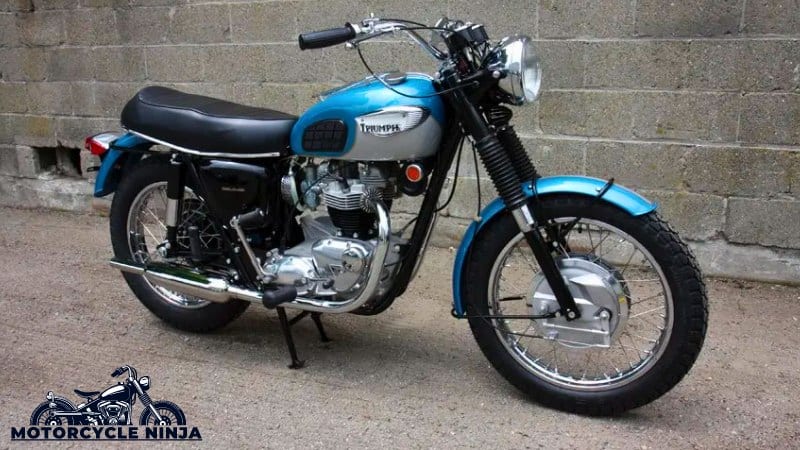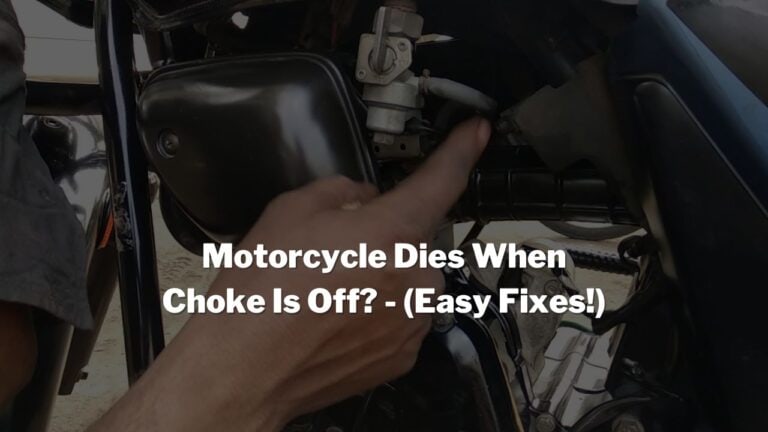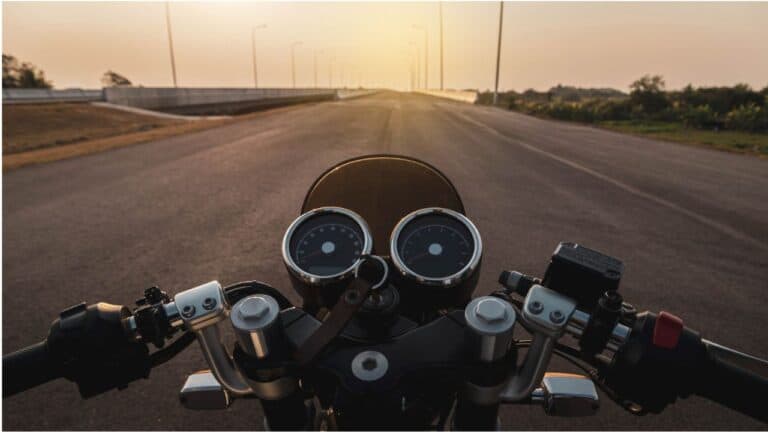How Many Miles Do Motorcycles Last? – (Honda, Kawasaki, Yamaha, Harley…)
Are you planning to buy a used motorcycle? It’s a great idea to save money. But you must know about motorcycles. Everything in the world has a limited lifespan, including motorcycle engines. You must be aware of what is the average lifespan of a motorcycle to crack the best deal.
So, how many miles do motorcycles last? Typically, a motorcycle lasts between 40,000 to 60,000 miles. But, it also depends on the service history and maintenance of the motorcycle. I have seen motorcycles that last over 100,000 miles with on-time service and regular maintenance. However, a touring motorcycle above 50,000 miles is generally considered old.

Table of Contents
- 1 What Is High Mileage For A Motorcycle?
- 2 How Long Do Motorcycle Engines Last?
- 3 What Factors Affect Motorcycle’s Engine Life?
- 4 How To Extend Motorcycle’s Engine Lifespan?
- 5 What Is Considered High Mileage For A Motorcycle?
- 6 Is 50,000 Miles A Lot On A Motorcycle?
- 7 How Many Miles Is Good For A Motorcycle?
- 8 Conclusion
What Is High Mileage For A Motorcycle?
If you purchase a used motorcycle, always pick one with lower mileage. Higher mileage indicates more worn engine components like pistons, cylinder walls, crankshafts, gearbox, clutch system, etc.
Generally, a motorcycle over 50,000 miles is considered old. But that doesn’t mean it has reached the end of a milestone. If the motorcycle is regularly serviced and maintained, it lasts over 100,000 miles.
My father bought a Harley-Davidson XLH1200 Sportster in 2000 (approximately 22 years), and it’s still running smoothly without any mechanical failure. It has reached the 210,000-mile milestone.

How Long Do Motorcycle Engines Last?
A well-kept and frequently serviced motorcycle lasts many years without any mechanical failure. I have prepared the average lifespan of a motorcycle engine based on historical data.
| Motorcycle Type | Average Lifespan (Miles) | Average Lifespan (Years) |
|---|---|---|
| Touring Bikes | 40,000 to 60,000 | 20 to 25 |
| Cruiser Motorcycles | 40,000 to 50,000 | 15 to 20 |
| Sports Bikes | 30,000 to 50,000 | 10 to 15 |
| Off-road Bikes | 20,000 to 30,000 | 8 to 10 |
| Dirt Bikes | 12,000 to 15,000 | 4 to 5 |
The motorcycle’s lifespan also depends on your riding style, service intervals, on-time oil change, type of engine, etc.
Here are the average lifespan of some world-famous motorcycles brand-
| Motorcycle Brand | Average Lifespan (Miles) |
|---|---|
| Honda | 150,000 to 160,000 |
| Kawasaki | 130,000 to 150,000 |
| Yamaha | 120,000 to 150,000 |
| Haley Davidson | 120,000 to 150,000 |
| Triumph | 100,000 to 130,000 |
| Ducati | 100,000 to 120,000 |
| Suzuki | 80,000 to 100,000 |
| BMW | 75,000 to 90,000 |
| Royal Enfield | 90,000 to 120,000 |
The above data shows that Honda, Yamaha, and Kawasaki are the most reliable motorcycle brands in the world. However, this data doesn’t guarantee for that engine longevity.
What Factors Affect Motorcycle’s Engine Life?
If you know the factors that affect a motorcycle’s engine lifespan, you can apply that in daily life and enhance your motorcycle’s lifespan. I have mentioned some factors that affect a motorcycle’s engine life.
1. Engine Size
The size of a motorcycle’s engine can play a role in its overall lifespan. Generally, smaller engines are less stressed and may have a longer lifespan than larger, high-performance ones.
However, this is not a strict rule, as proper maintenance and care can significantly impact engine longevity regardless of size.
2. Service and Maintenance
The service and maintenance a motorcycle receives throughout its life greatly influence its engine’s longevity.
Regular oil changes, proper chain lubrication, scheduled maintenance, and timely replacement of filters and fluids are essential for keeping the engine running smoothly. A motorcycle with an on-time service and maintenance history will likely have a longer life expectancy.
3. Riding Habits
How a motorcycle is ridden can affect its engine life. Aggressive riding styles, frequent high-speed operation, and harsh acceleration or braking can put more stress on the engine components, potentially reducing its lifespan.
On the other hand, a motorcycle that has been ridden responsibly, with gentle acceleration, smooth gear changes, and proper warm-up and cool-down periods, is likely to have a longer-lasting engine.
4. Cooling Method
Air-cooled engines, while simpler in design, may have a tendency to run hotter, especially during extended periods of idling, long trips, or heavy traffic.
On the other hand, liquid-cooled engines offer better temperature regulation and are often associated with improved engine longevity.
However, proper cooling system maintenance is crucial for both types to ensure optimal performance and longevity.
5. Parts Replacement
Timely replacement of worn-out components, such as timing belts, chains, sprockets, and valves, can help prevent unnecessary stress and damage to the engine.
Genuine and high-quality replacement parts should be used to maintain the engine’s reliability and longevity.
How To Extend Motorcycle’s Engine Lifespan?
If you think your motorcycle will last longer if you leave it in the garage, you’re wrong. Your motorcycle requires regular maintenance for a longer lifespan. I have mentioned various methods to increase your motorcycle’s engine lifespan.
Regular Oil Change
One of the most crucial maintenance tasks is regularly changing the engine oil. Follow the manufacturer’s recommendations for oil type and change intervals. Fresh, clean oil ensures proper lubrication, reduces friction, and helps keep the engine components running smoothly.
You should change your motorcycle engine oil every 3000 to 5000 miles. However, it depends on what type of oil you’re using. Click here to read my detailed guide on motorcycle oil change intervals.
- Mineral-based engine oil lasts 2000 to 3000 miles.
- Semi-synthetic engine oil lasts 5000 to 6000 miles.
- Fully synthetic engine oil lasts 8,000 to 10,000 miles.
Ride Properly
Adopting proper riding techniques can significantly extend your motorcycle’s engine lifespan. Avoid excessive revving, aggressive acceleration, and abrupt braking.
Warm up the engine before pushing it too hard, and let it cool down before shutting it off. Smooth and controlled riding reduces the engine’s stress and prolongs its life.
Store Properly
Store your motorcycle in a clean, dry, and well-ventilated area when not in use. Protect it from extreme temperatures, moisture, and direct sunlight.
Consider using a motorcycle cover to shield it from dust and debris. Proper storage prevents rust and corrosion, keeping the engine and other components in good condition.
Click here to read my guide on storing a motorcycle for winter.
Replace Parts
Regularly inspect and replace worn-out or damaged components, such as spark plugs, oil filters, air filters, timing belts, and piston rings. Shirking worn parts can lead to engine inefficiencies and potential failures.
Consult the manufacturer’s guidelines or seek professional advice to ensure you’re using quality replacement parts.
Routinely Clean
Regularly cleaning your motorcycle keeps it looking good and helps prevent rust and corrosion. Use a mild detergent, sponge, and soft brushes to clean the exterior, and avoid using high-pressure water directly on sensitive components. A clean motorcycle is less prone to corrosion and allows for better heat dissipation.
Regular Lubrication
Ensure all moving parts, such as the chain, throttle cables, and clutch levers, are properly lubricated.
Use lubricants recommended by the manufacturer and follow the guidelines for application frequency. Proper lubrication reduces friction, minimizes wear and tear, and extends the engine’s lifespan.
What Is Considered High Mileage For A Motorcycle?
High mileage for a motorcycle is typically considered to be over 50,000 miles. However, a well-maintained bike can still provide reliable performance even with higher mileage. When evaluating a motorcycle’s value, focus on overall condition and maintenance history rather than just mileage.
Is 50,000 Miles A Lot On A Motorcycle?
Generally, a motorcycle over 50,000 miles is considered old, but that doesn’t mean it reached its milestone. A well-maintained and regularly serviced motorcycle can last over 100,000 miles without mechanical failure. I have been riding a 2000 Harley-Davidson XLH1200 Sportster that reached 210,000 miles and is running smoothly.
How Many Miles Is Good For A Motorcycle?
A used motorcycle under 20,000 miles is considered good to purchase. However, it depends on several factors, including the motorcycle’s make and model, the engine type, maintenance history, riding conditions, and overall care.
Conclusion
I hope you understand the factors affecting the motorcycle’s engine lifespan. A well-maintained and timely serviced engine will last longer. Before buying a second-hand bike, you can check the service history and visually inspect it for wear and tear.





